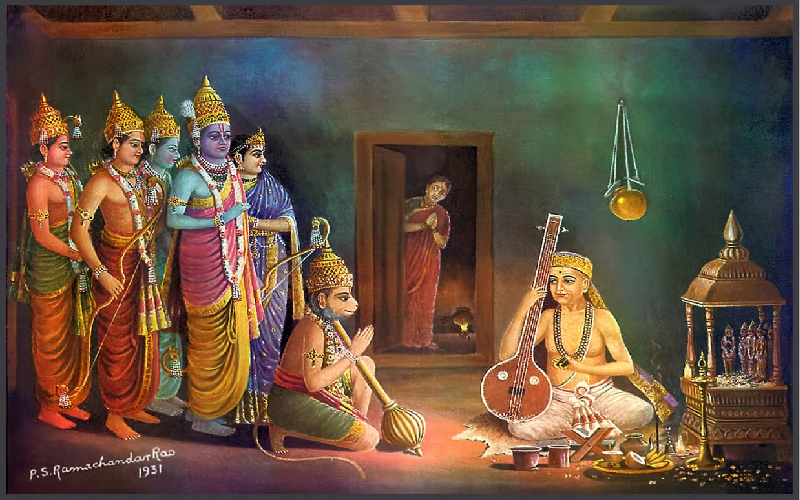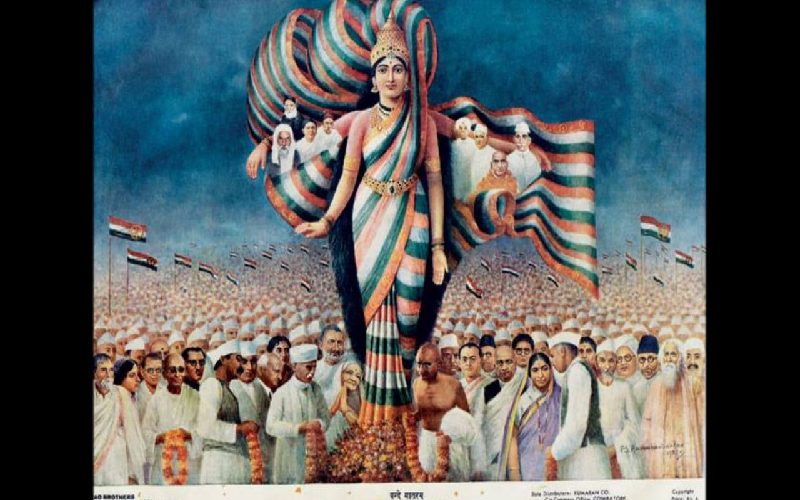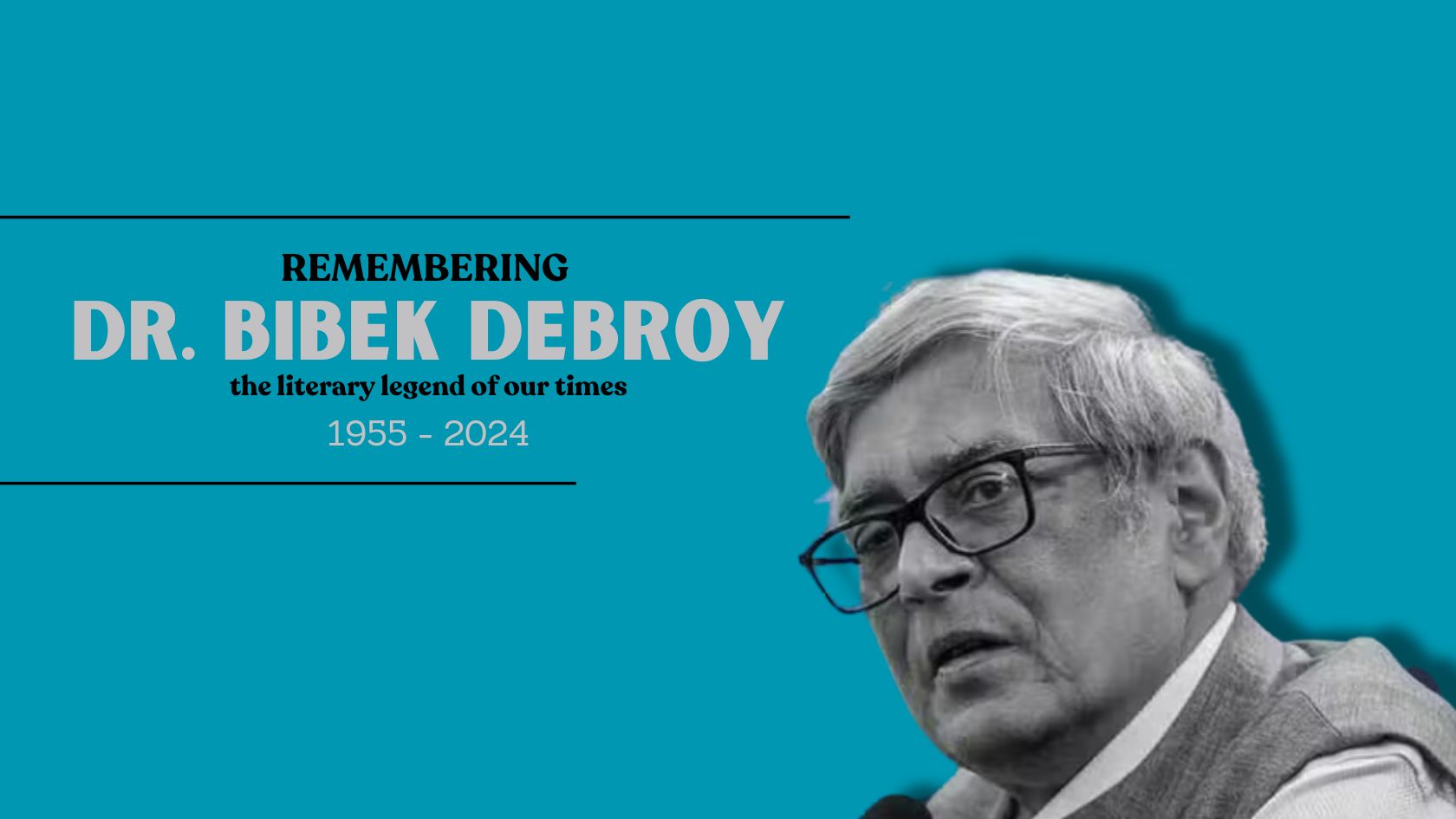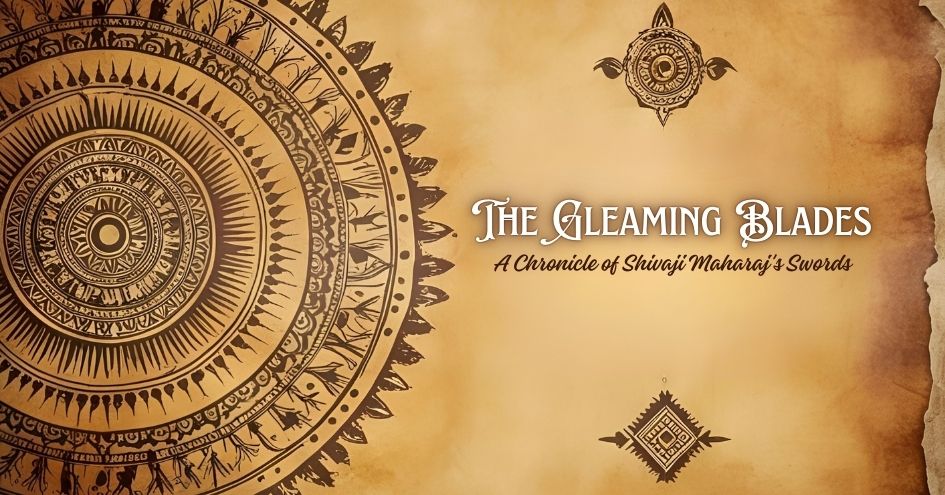
Jivanna Rao & Ramachandra Rao
Rathinasabapathypuram in Coimbatore is named after its founder, Diwan Bahadur C. S. Rathinasabapathy Mudaliar (1886 - 1956). The roads of this locale were named after local leaders. Rathinasabapathy Mudaliar (CSR) wanted to name a road after the well-known academician P. S. Jivanna Rao who was with the Tamil Nadu Agricultural University. However, the patriotic Jivanna Rao requested CSR to name the road after the great patriot cum leader Lokamanya Bal Gangadhar Tilak (1856 - 1920). Tilak firmly believed that Swaraj was the birth right of every Indian.
Jivanna Rao belonged to Veedhividangan, a place located in Tiruvarur District. His father P. Swaminatha Rao (P stands for Punathambikar) had been a landlord those days. This Maratha Deshastha Brahmin clan had migrated into the Tamil speaking parts of our country during the times of Chatrapati Shivaji Maharaj. They added to the cultural heritage of the Tanjore region. The Marathas were known for their extensive documentation. Their records would exceed that of the Europeans.
Jivanna Rao had joined as a lecturer and he retired by 1947. He lived up to 1962. His work won accolades and the Tamil Nadu Agricultural University had initiated a medal in his name. Many scientists were awarded this prestigious medal and Dr. Velappan Prakasam - Founder Chairman of Mushroom Foundation of India was among them. He was awarded the same during 1976 - 78 in recognition for having obtained the first rank in Plant Pathology in M. Sc. (AG). Jivanna Rao was an intellectual and he was a member of the Theosophical Society of India. This great admirer of Annie Besant used to visit the society which located near Raja Street. In fact, the street which housed the society continues to be known as the Theosophical Society Street. It must have been quite a sight to witness the events those days.
The follower of Ramana Maharishi, Paul Brunton (pen name of Raphael Hurst) was a pen friend of Jivanna Rao. Paul Brunton had met Ramana Maharishi and had also written about him. Similarly, his pen friend Jivanna Rao had also written books about the great saint after visiting him on 31/12/1937. Paul Brunton had visited Jivanna Rao in his residence 'Tanjore House' which was located on East Lokamanya Street in R. S. Puram, Coimbatore. Jivanna Rao was in his fifty first year when he came to know of the great Saint. Jivanna Rao became a devotee of Bhagawan Ramana, and he had visited him several times. Vidya & Ravikumar Rao (grandson of Jivanna Rao) were happy to share these details and also the excerpts from the book - Ramana As I Know Him (Surpassing Love and Grace) written by Jivanna Rao.
“I first knew about Sri Ramana Maharishi about seventeen years ago (December 1937) in my fifty first year. I soon read about his life and teachings from that excellent book, ‘SELF-REALISATION’, by B. V. Narasimhaswami and at once made up my mind to see him. The opportunity came almost immediately, and I saw Maharishi for the first time on 31/12/1937. From 1938 onwards I was a frequent visitor at the ashram for a number of years. I have even talked to him which event I consider as the rarest privilege of my life. I will always remember the beautiful smile of blessing which shone on his divine face whenever I took leave of him after doing my Sashtanga Namaskar. Below I give reminiscences of what took place in three of my visits at the ashram though they may seem to be of a trivial nature to many.”
“In one of my visits. I took a bunch of grapes as my offering, placed it on a stool in front of the Maharishi and took my seat along with other visitors in the hall. In a few minutes, a monkey came and took away the whole bunch. In that holy and still presence of the sage, none would dare drive the monkey which would disturb the tranquillity and peace of the atmosphere. Maharishi remarked, "How is it you are all looking at this (the monkey etc.,)" And after a pause said, "Let it go"”.
“In another visit, about which I had not intimated to the ashram in advance, and Maharishi would not have known about my coming, he remembered me so well as to call me by name, which was a surprise to me, and asked me if I knew Marathi language, to which I replied that Marathi was my mother tongue. He informed me that a book in Marathi was being published by Gunaji which may perhaps interest me."
The intellectual P. S. Jivanna Rao was married to Savithri Bai and couple were blessed with J. Rajaram Rao (a banker), Dr. J. Thuljaram Rao (Director - Sugarcane Breeding Institute & Vice Chairman - Bharatiya Vidya Bhavan, Coimbatore), J. Sakharam Rao (Professor at Tamil Nadu Agricultural University), J. Krishnamurthy (Deputy Director - Cotton Development, Mumbai) and Soni Bai.
Ravikumar Rao has taken the efforts to preserve the legacy and he happens to be the son of J. Rajaram Rao (first son of P. S. Jivanna Rao). His wife Vidya is the great granddaughter of the well-known Rai Bahadur Kanchi Raghavendra Rao. Her uncle, N. Vittal I. A. S. was the CVC (Central Vigilance Commissioner) and has authored the well-researched book, ‘Maharashtrians in Tamil Nadu’.
P. S. Lakshman Rao, the younger brother of P. S. Jivanna Rao was a Diwan in the Court of the Raja of Ramnad. The other brother P. S. Ramachandra Rao was passionate about painting. He used to live with P. S. Jivanna Rao in Coimbatore. On the passing away of his wife, P. S. Ramachandra Rao moved over to Ramnad and began living with his brother P. S. Lakshman Rao. While the Diwan attended to his Court duties, the painter spent hours painting.

P. S. Ramachandra Rao was impoverished all through his life. His Diwan brother and Dean brother supported him. Nobody in the family knew how he found the means to buy the boards, pigments, thinners, brushes, and other essentials. Nor did they know where he bought them. It is pretty obvious that he used the best of materials. The paintings are pristine even after 80 plus years. People who are aware of art would vouch that P. S. Ramachandra Rao, was as great a painter as Raja Ravi Varma. Ramachandra Rao painted prolifically during his stay at Ramnad. His work was perhaps limited only by his means to purchase raw materials. The family could however lay their hands only on two of his works - Lord Rama at the residence of Saint Thyagaraja and that of Bharat Mata.
The comparison between Raja Ravi Varma and P. S. Ramachandra Rao is poignant and heart wrenching. One belonged to a royal family and lived comfortably while the other was impoverished. He had to live on the support extended to him by his brothers and eked out a living virtually hand to mouth. However, he still managed to follow his passion. P. S. Ramachandra Rao is unsung.
It is important to study the two paintings by this great artist, Lord Rama with his consort Sita is found in the company of his brothers and Hanuman. He is giving a darshan at the residence of the Saint. People conversant with music will understand that it was for a Kirtan that was composed by Saint Thyagaraja. The devotion had compelled Lord Rama to appear along with his full family. While Saint Thyagaraja was busy with his singing, it was the wife who was blessed with the vision of Lord Rama and his family. If one makes a close observation, it is possible to see the colours and lighting. The poverty of the Saint is manifest. The viewer can see the 'Choola' in the kitchen and the dull fire therein. It is possible to savour the intricate details. This picture was done in the 1931.
The other picture depicts 'Bharat Mata'. Look at the peace and tranquillity on her face. She is standing inside the boundary lines of Bharat and the saree is made up of the tricolour. The picture also carries a gathering of a huge crowd. However, about a few dozen from the gathering is clearer in the picture. They are the patriots and nationalists who fought the colonial rulers in order to free Bharat Mata. Look closely and you will identify most of the freedom fighters - Bal Gangadhar Tilak, Gandhi, Sardar Vallabhai Patel, Nehru & Netaji. This picture was completed in 1937. This wonderful piece of art carries the flavour of the freedom movement.
NEXT ARTICLE

All authors who write about the Mahabharata have to read its unabridged version. The most popular unabridged translation used to be the one by Kisari...

In the annals of Bharat Varsh, amidst the swirling mists of time and legacy, emerges the figure of Chhatrapati Shivaji Maharaj, a warrior whose name e...